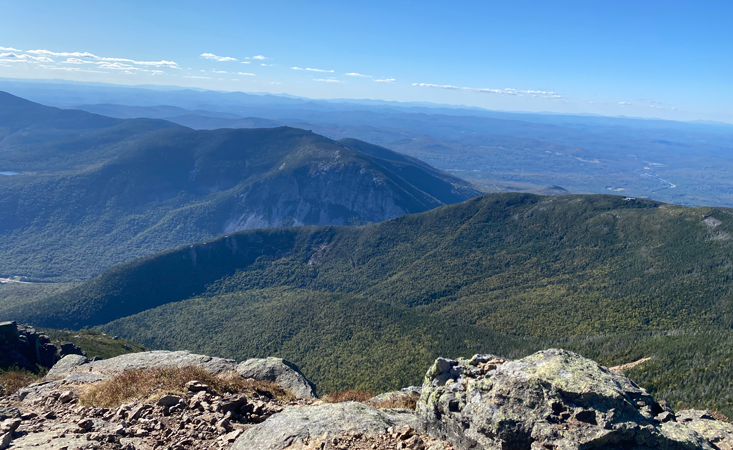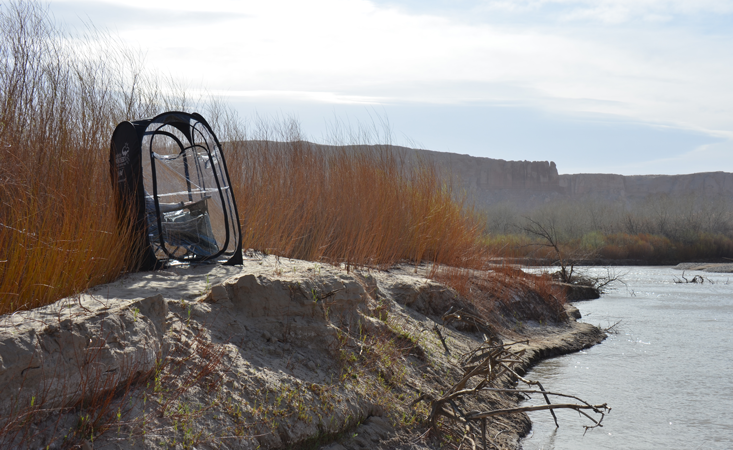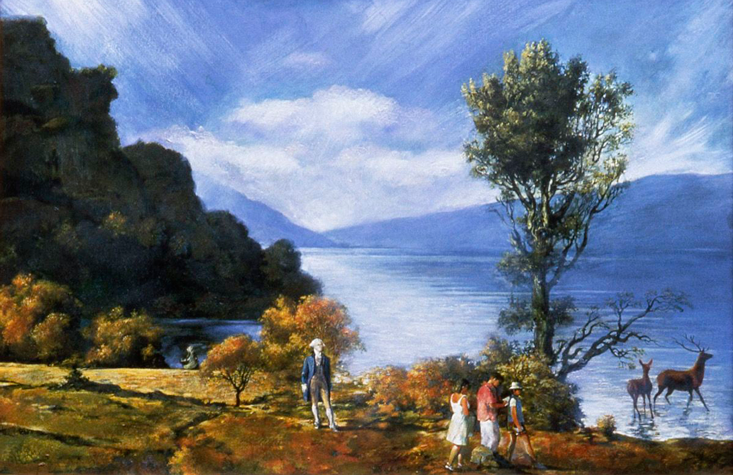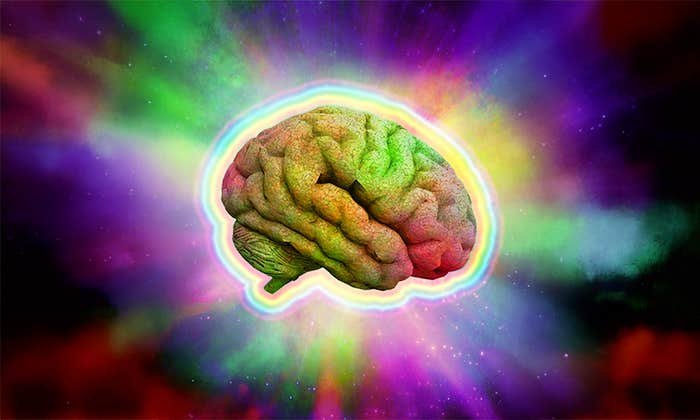Hiking the Franconia Ridge Loop is an intimidating proposition. The trail, in the heart of New Hampshire’s White Mountain National Forest, is close to 9 miles long, and peaks at over 5,000 feet above sea level. The ridge connects several of New Hampshire’s highest peaks and offers stunning views of the surrounding mountains. The ridge itself is a ragged, narrow path flanked by alpine tundra, with low-standing bushes and virtually no trees.
My partner and I found ourselves on the Franconia trail on a recent Sunday morning, our backpacks full of trail mix, sandwiches, and hot tea, our minds ready to take on the arduous hike. We entered the forest and discovered a path covered on all sides with beech, birch, and fir trees. Ferns littered the forest floor, while moss covered downed trees like a short but scraggly beard. The path zigzagged across streams and waterfalls. Tree roots and boulders—some as small as sneakers, others as big as cars—hogged the trail unapologetically. The path appeared to ascend into infinity, like the Penrose stairs.

The hike was a welcome escape from the city, and as we walked, the conversation turned to the power of nature. Walking through a forest, climbing a mountain, watching ocean waves: These activities have for millennia awakened something raw in humans. Even as we collectively barrel toward destruction of nature, humans seem to have an innate connection to it. It’s a connection that deepens when we consider the magnitude and irreversibility of extinction. But what’s the essence of that connection? What happens in a human brain during a walk through a forest, when watching the mesmerizing licks of a campfire or the undulations and ripples of rapids in a stream?
As a neuroscientist, I spend my days thinking about how brains orchestrate behavior and synthesize perception. I ask questions about how brain cells allow us to experience the world and set up laboratory experiments to answer them. A number of basic questions crossed my mind as we scrambled up the path. How do our legs adapt from walking on a paved road to scrambling up rocks? Animals have no trouble but few machines are this acrobatic. How do our eyes lock on to the optimal path across the jagged terrain? Machines struggle with visual recognition, too, while humans and other animals do not. Even more intriguing are the wondrous effects nature has on our emotional states. How does one begin to examine the nebulous neuronal roots of our fascination with nature?
The evolutionary explanation for human connection to nature is a colossal safari through the African savanna, where our ancestors fought, fed, and frolicked for millions of years. The biologist E.O. Wilson speculated on this story in Biophilia, a slim volume on human attraction to nature. Wilson defined biophilia as an “innate tendency to focus on life and lifelike processes.” He argued that if other animals are adapted to their environments and are best-suited to the environments in which they evolved—for example, a thick white coat serves the polar bear well in its native cold and snowy Arctic—then is it possible that humans too, despite our ability to live anywhere on this planet, are best adapted to the particular environment in which we evolved?
“The more habitats I have explored, the more I have felt that certain common features subliminally attract and hold my attention,” Wilson wrote. “Is it unreasonable to suppose that the human mind is primed to respond most strongly to some narrowly defined qualities that had the greatest impact on survival in the past?” Those qualities include the savanna’s sprawling grasslands, sparse trees, cliffs and other vantage points, as well as bodies of water, which provided resources. Wilson cited human tendencies to build savanna-like environments where they are not found naturally, as in malls or gardens; open-concept architecture seems to have hit on our love of vast spaces, too.
As people spend time in nature, they’re thinking less about their to-do list and more about being in the moment.
It’s satisfying to think being in nature is pleasant because this is the environment to which our minds are best adapted. The trouble with such stories is they are experimentally untestable. We can’t wind back the evolutionary clock. We can’t transform Earth into a lab and run an experiment with half of humanity evolving in the savanna and the other half in the desert. Would the desert group evolve to prefer desert-like environments over the savanna? Despite the fact that our ancestors spent thousands of generations in the savanna, wouldn’t it be logical for a primate to prefer a resource-rich, low-danger environment if given the choice? Couldn’t the preference for the savanna be due as much to a careful consideration of pros and cons—using one’s brain—as to an evolutionary instinct?
Still, given our minds evolved in nature, it’s reasonable to conclude that spending time in human-made environments—houses, offices, towns, cities—crosses some primal wiring. Some psychologists have run with this idea and now tout nature as a health intervention, a miraculous cure for everything that ails the modern human. Chief among these ideas is Attention Restoration Theory, developed by the psychologists Stephen and Rachel Kaplan, who argue that nature’s health benefits are due to its ability to relieve stress and fatigue and restore focused and productive attention. I was skeptical to believe the hype of such studies, but I couldn’t deny that being in nature is a pacifying experience I cherish. Evolutionary psychology stories are grand, but even if true, they do not explain how nature envelops our emotions. To understand why nature energizes us, the focus must pivot to the core of the matter: the brain.
The desert of southern Utah is a mesmerizing landscape of red sandstone mesas and canyons. The sheer scale of the place evokes a sense of deep time: These wonders have been forming for millions of years and will continue to change long after the last human eyes behold their beauty. People come here to hike, rock-climb, camp, and to find any number of ways to unplug. That’s why this may be the last place one would expect to find machines for measuring brain activity. For Rachel Hopman, Sara LoTemplio, and other graduate students mentored by David Strayer, a psychologist at the University of Utah, bringing such tools to the desert was the logical next step in their efforts to understand the brain on nature.
“We packed all of our equipment up and basically recreated a lab out in the desert,” Hopman, now a postdoctoral fellow at Northeastern University, told me. “The first time around didn’t go as smoothly as planned.” The researchers wanted to begin understanding the neural mechanisms associated with a phenomenon they call attention restoration, one of the many mental benefits of nature psychologists like the Kaplans have documented. They turned to the electroencephalogram (EEG), a method that measures the coordinated rhythmic oscillations of millions of neurons across the surface of the brain known colloquially as brain waves.
Hopman, LoTemplio, and others in Strayer’s lab designed an experiment in which they measured brain waves in volunteers before, during, and after a five-day hike in Southern Utah, hypothesizing that unplugging from the stresses of city life and technology for several days would have some noticeable impact not only on people’s mood and mental wellbeing, but also on brain waves.

“Our brains are not evolved to deal with the number of different channels competing for our attention in the modern environment, with computers, phones, streets, cars,” LoTemplio hypothesized. “A natural environment is more suitable to the way our attentional systems operate.”
The idea that some physiological change in the brain had to be associated with the feelings accompanying nature immersion is a given: Any feeling, percept, movement, or thought must have an underlying neurological signature (unless you believe in souls). The question was what exactly happens in the brain after several days in the desert.
Scientists wishing to measure brain activity face a frustrating tradeoff. If they wish to understand the role individual neurons play in a certain behavior, they have to measure those neurons in animals, where bioethical rules allow them to use invasive tools like micro-wire electrodes implanted in the brain. Those wishing to study the complex mysteries of human cognition must be satisfied with more opaque devices like EEG and fMRI. EEG gathers its data with several dozen electrodes temporarily glued to the scalp, which measure fast changes in the coordinated activity of thousands of neurons close to the surface of the brain. On the other hand, fMRI measures slow changes in blood flow—which correlates with neuronal activity—in millimeter-sized chunks all over the brain. (In limited cases, scientists record from individual human neurons using electrodes in neurosurgical patients.)
“I am against this anthropomorphic approach to science,” he said. Neurons do not understand faces or toilet brushes.
To set up an EEG lab in the desert, Hopman bought enclosures—“sports pods”—to keep the subjects and the equipment safe. After a day of hiking, the participants would climb into the clear plastic pods, which were set up along a riverbank. With a cap full of EEG electrodes over their heads, they would proceed to have their brain waves recorded.
What Hopman and colleagues found was a prominent decrease in the strength of the alpha rhythm in the time spent in nature compared to either before or after. The alpha rhythm is a brain wave with a frequency around 10 hertz and is typically associated with attentional processes. Closing the eyes results in a large increase in the strength of the alpha rhythm in visual cortical areas in the back of the head. In physiological studies, increased alpha power has been correlated with inhibition of cortex. Physiologists have taken the findings to mean that low alpha power has something to do with outward attention and cortical activation. Conversely, increases in alpha have been associated with inward attention and mind-wandering.
“What we think that means is that as people spend time in nature, they’re less engaged in internal narratives and internal kinds of conversation or thinking about their to-do list or ruminating on future plans. They’re more likely to be aware and in the moment,” Hopman said. “We have also studied this through cognitive tasks and people’s ability to perform different cognitive tasks. It has pretty consistently shown that nature can improve performance, but that does vary in certain ways. People have a different ability to attend to information based on their environment. So, nature provides this kind of increased awareness of your external environment,” Hopman said.
In terms of attentional restoration, it is not clear if the effects of the hiking trip are due to nature rather than the myriad confounding variables. “There’s a lot more work that needs to be done to definitively qualify it as a nature-specific effect,” LoTemplio told me. Perhaps the effects are due to what she called a vacation effect; in that case, a trip to Las Vegas would have the same effects, despite being a radically different environment from the desert. Likewise, the important effects may be due to the fresh air, physical activity, or social connectedness rather than to nature per se.
The EEG results too, while intriguing, are hard to interpret because the experimenters did not control for the scene the subjects were looking at during the recordings. On the other hand, the fact that decreases in the power of alpha waves persisted when the subjects had their eyes closed points to the effect being real, if difficult to understand.
Another reason that the finding that nature reduces alpha power is hard to interpret is that previous studies have found the opposite. In a study from 1981, Roger Ulrich, then a professor of geography at Delaware University (now at Chalmers University of Technology in Sweden), found increased alpha power for subjects viewing images of nature compared to human-made scenes. Likewise, Richard Taylor, a physicist at the University of Oregon, reported increases in alpha power in subjects viewing images of increasingly complex fractal patterns, which mimic the complexity of nature scenes.
Reading through EEG studies on nature soon became a dizzying experience. I could almost feel my own alpha rhythm jump off the charts, chaotically trying to keep up with the contradicting data and interpretations. Besides, it was hard to understand what the brain waves really meant in terms of what the neurons in the brain were doing. When I asked LoTemplio what kinds of things she would want to learn by looking at the brain, she admitted that “some might argue you don’t even need to look at the brain if you’re just observing these kinds of cognitive improvements.” However, showing brain data would strengthen the case for any possible policies regarding nature therapy, she offered.
The confusing EEG data notwithstanding, the results on attentional restoration reminded me of E.O. Wilson’s interpretation of the effect of nature on the human mind. “The naturalist is a civilized hunter,” he wrote in Biophilia, without ever consulting an EEG machine. “He goes alone into a field or woodland and closes his mind to everything but that time and place, so that life around him presses in on all the senses and small details grow in significance. He begins the scanning search for which cognition was engineered. His mind becomes unfocused, it focuses on everything, no longer directed toward any ordinary task or social pleasantry.”
Still, I was curious how Wilson’s personal observations might look from the inside of a skull. How do neurons behave when their owner lets them out into nature? It’s a vexing question. The simpler question of visual perception—do visual cortical neurons respond differentially to nature scenes compared to human-made ones?—seemed to be more approachable. To answer it required a trip back to the early days of neuroscience.
One of the challenges of science is understanding complex relationships among large numbers of uncontrolled variables. This is especially problematic for neuroscience, where the variables—an animal’s neurons and the environment outside its brain—number in the billions. Understanding how neurons in brains interact with each other and the entire world outside the brain is a problem akin to predicting the movements of all celestial bodies in the galaxy, if those bodies were also juggling each other while being driven by toddlers in bumper cars.
In order to make headway, neuroscientists often simplify the problem by placing animals in a laboratory, where they control the environment much better than in the wild. In the case of visual perception, this has, historically, involved presenting artificial stimuli to restrained or anesthetized animals, while recording neuronal activity in the visual cortex with electrodes.
The mesmerizing Utah desert of red sandstone is the last place one would expect to find machines for measuring brain activity.
Using this approach, David Hubel and Torsten Wiesel discovered in the late 1950s that neurons in the visual cortex are highly sensitive to oriented bars, with each cell responding best to a particular angle. The discovery was serendipitous. The physiologists were flashing dots on a screen while recording disappointingly weak responses from a neuron in the visual cortex of an anesthetized cat, when a slide jammed on its way into the projector. The stuck slide cast a shadow on the screen, which excited the neuron beyond anything the two had previously observed. Since then, edges, bars, or gratings have become the stimuli of choice.
“When you use very simple stimuli like gratings, you can have absolute control,” Gabriel Kreiman, a professor of neuroscience at Harvard, told me. “There are two or three variables that you need to worry about: There is a contrast; there is a spatial frequency; and then maybe if you’re very courageous, you can add movement.” Using simple parametric stimuli makes it easier to understand the relationship between stimulus and neuronal response; the disadvantage is that no animal’s natural visual world consists solely of bars, which makes it difficult to extrapolate findings to real world situations. On the other hand, real-world images have a lot going on in them.
In the 1990s, Russian-American artists Vitaly Komar and Alexander Melamid conducted a survey to determine the elements of a painting that Americans preferred and then painted a work that blended the elements. It featured a lot of blue—the sky, mountains, a lake—gentle brown woods, hikers, deer, and George Washington. They called the painting America’s Most Wanted. It had a satiric bite to it but the late art critic and philosopher Denis Dutton, in his book, The Art Instinct, wrote the painting shouldn’t be written off as worthless, “for it did reveal one stunning fact: People in very different cultures around the world gravitate toward the same general type of pictorial representation: a landscape with trees and open area, water, human figures, and animals.” And George Washington.

Could the landscape painting tell us something about a hardwired connection to the outdoors? To understand if scenes of nature activate the visual cortex in some special way that other stimuli do not, one would have to spend eons observing a neuron’s activity because “the universe of possible images is essentially infinite,” Kreiman said. If a particular nature scene excited a neuron less than a particular non-nature scene, how many scenes would you test before reaching a general conclusion about the neuron’s preference?
Of course, this conundrum applies to all images, not just those of nature scenes. And neuroscientists have been finding neurons that respond to all sorts of things, not just oriented gratings, but objects, faces, as well as geometric shapes and scenes. Some such discoveries came serendipitously, too. In the 1970s, Charlie Gross, a neuroscientist at Princeton University, discovered neurons in monkey cortices that respond to hands when, in exasperation to a poorly responding neuron, he waved his hand in front of the monkey’s face. His team later described face-preferring neurons, as well as those that responded to an oval toilet brush that had an uncanny resemblance to the faces of the lab members, who happened to all be bearded white men.
Kreiman feels strongly about such discoveries. “I am against this anthropomorphic approach to science,” he said. The problem, as he sees it, is that neurons and people speak different languages. Neurons do not understand faces or toilet brushes; they speak only in spikes, electrochemical impulses sent to and received from other neurons. So why should an individual neuron respond best to something with a human-language label of “face” or “nature scene”?
Kreiman’s solution is to take the human experimenters out of the loop and replace them with a computer model. Such an approach is better than “a human comfortably sitting in an armchair and saying, I think that faces are cute. Let’s try faces. I think that hands are important. I think from an evolutionary standpoint, we need to study color,” he said. “These are all anthropomorphic constructs. Having a more quantitative, unbiased method, in terms of experimental design, is a good thing.”
Collaborating with Margaret Livingstone, a professor of neuroscience at Harvard, Kreiman showed that computers can make decent stimulus generators. In a 2019 paper, they described an algorithm they named XDREAM—“EXtending Deep-Dream with Real-time Evolution for Activity Maximization in real neurons”—which compares the responses of one of a monkey’s visual neurons to a set of synthetic stimuli; it then takes the stimuli that elicited the highest responses, mutates them randomly, and presents the new stimuli again. “The neuron is swiping right, swiping left, saying, ‘I like this picture. I don’t like that picture,’” Kreiman said. “Basically, we have a closed loop, and generate better and better images.”
It’s satisfying to think being in nature is pleasant because this is the environment to which our minds are best adapted.
Over several generations of such evolution, the algorithm has found stimuli that elicit much higher responses in visual neurons than do normal hand-picked natural stimuli. In this case, natural refers to photographs of real-world items such as a chair, an airplane, or body parts. Non-natural stimuli in this case would be parametric stimuli like oriented bars, while natural would include both the savanna as well as something human-made like a hydrant. The XDREAM stimuli that elicited the highest responses could be said to be hyper-natural: mishmashes that evolved algorithmically from random textures and often look like Cubist depictions of monkey faces or body parts. Still, statistically speaking, these images show complex patterns and textures, and evoke a vague sense of animacy. “If we construct stimuli in the right way, we could generate images that look funky and strange, but that still respect properties of natural image statistics,” Kreiman offered.
When I mentioned E.O. Wilson’s idea, from Biophilia, that because our brains evolved in nature, they may respond more robustly to objects found in nature, Kreiman agreed that this is possibly true. But he wants to discover this through an unbiased, human-free way, rather than imposing it through anthropomorphic hypotheses. “I’m hoping that by constructing rigorous computational models, we will discover the biophilia; we will discover that that neurons are tuned to these kinds of statistical regularities in the world.”
Meanwhile, we are left pondering what it means for a visual neuron in a monkey’s brain to be most active when presented with Kreiman’s hyper-natural images. (Perhaps Cubists like Picasso or Georges Braque intuited that their transformations of commonplace objects tickled the cortex in some hyper-natural way.) “Perhaps the simplest interpretation is that natural stimuli are so much richer, that they sort of tap into a larger repertoire of neurons,” Kreiman said. While I could not find concrete data for this idea, there are several factors that support it: The distribution of angles at which edges are oriented is more diverse in scenes of nature than in human-made scenes, which are dominated by horizontal and vertical lines. Since neurons in the primary visual cortex prefer edges of a particular orientation, it is possible that many of them are chronically understimulated in human-made environments. Kreiman agreed that this is possible, though speculative.
Another piece of evidence comes from neurological patients with damage to specific areas of cortex, usually due to a stroke, who suffer from visual agnosia, or the inability to recognize specific objects. “These are very messy natural experiments,” Kreiman explained, since strokes do not follow clean brain region boundaries. One category of agnosia is for animate versus inanimate objects. A patient with this condition may, for example, be incapable of naming animals or plants, but unimpaired at naming human-made objects. This points to the possibility that representation of natural objects takes up a separate portion of cortical space. If this is true, then a person deprived of nature scenes may be depriving those neurons of activity as well. Of course, with both of these examples, I am making an equivalence between higher neuronal activity and pleasant feelings; this need not necessarily be true. Whatever the true neural basis for our love of nature is, it is likely more complex than we currently know or can easily describe.
After a three-hour ascent along the Falling Waters Trail, my partner and I reached the peak of Little Haystack Mountain, the first of three summits along the trail. The sun was blasting, the wind was shoving us side to side and filling up the soundscape. We were hot in the sun, and cold in the wind. We were soaking in sweat from the arduous climb and shivering from the cold at the same time. We were hungry but almost too awestruck to eat. Only a cloud or two punctuated the clear sky. The horizon above the still-green mountaintops shone light azure but darkened into an ultramarine directly overhead.
With green crests and valleys undulating into the vast space in front of us, I couldn’t help but think that there seems to be no way of avoiding being a player in climate destruction, short of off-the-grid living. It seems inevitable humans will continue to destroy nature for a long time. I worry about the thousands of species dying off, and the millions of humans whose lives will be upended by changing weather patterns, lower crop yields, and political shifts. I worry too for the charismatic species—elephants, whales, dolphins, the great apes—whose habitats are being plundered. These animals are intelligent enough to suffer emotionally from this destruction, but not intelligent enough to escape it.
Knowing that nature is dying ignites in me a preemptive nostalgia and the urge to stock up on outdoor experiences, like canned beans in a pandemic. Perhaps future studies of human connection to nature will focus not only on basics like visual perception but on complex feelings like grief. For now, the science on human connection to nature is in its infancy. The psychology and brain studies are endlessly captivating and important for understanding basic physiology, but it’s nearly impossible to say what they mean for personal experience in nature.
As a neuroscientist, I believe my research and that of my colleagues will continue to unlock important secrets of human life and health, perception and experience. But at the same time, I have come to appreciate that science can fall short of delivering a satisfying account of our experiences. I can only hope that if neuroscience ever does come up with the tools to explain something as ineffable as our love of nature, there is still nature left to love.
As we continued the ascent—from the summit of Little Haystack Mountain, up along the ridge to Mount Lincoln and the highest peak, Mount Lafayette—our legs grew increasingly wobbly and the sun dipped into the horizon. It felt wondrous that our muscles could keep carrying us forward, even when taking the next step felt like an impossibility. On the mountain’s western slope, exhausted but fulfilled, we stopped by a lakeside hut to refill our water bottles and rest in the chilly twilight. By the time we reached the bottom of the mountain, it was already pitch dark.
Grigori Guitchounts is a neuroscientist.
Lead image: Jorm S / Shutterstock


























